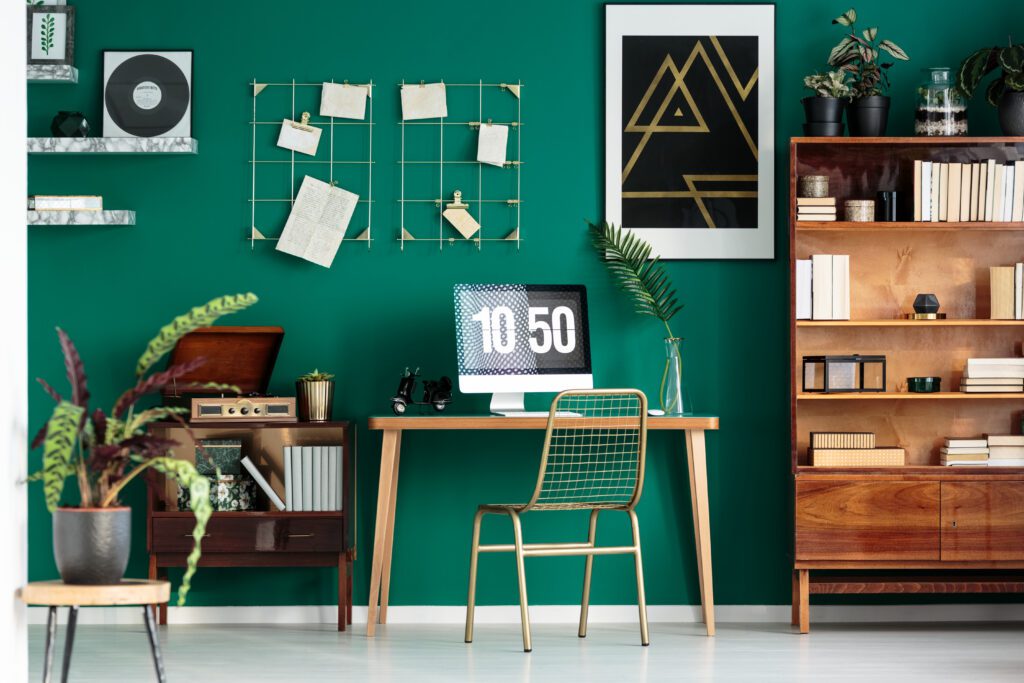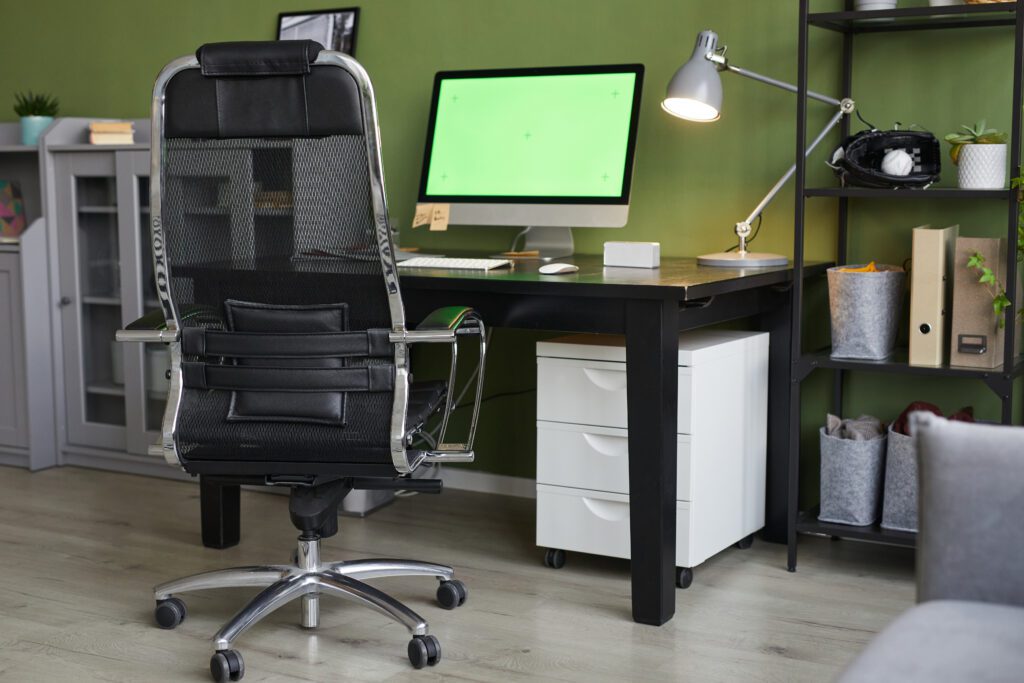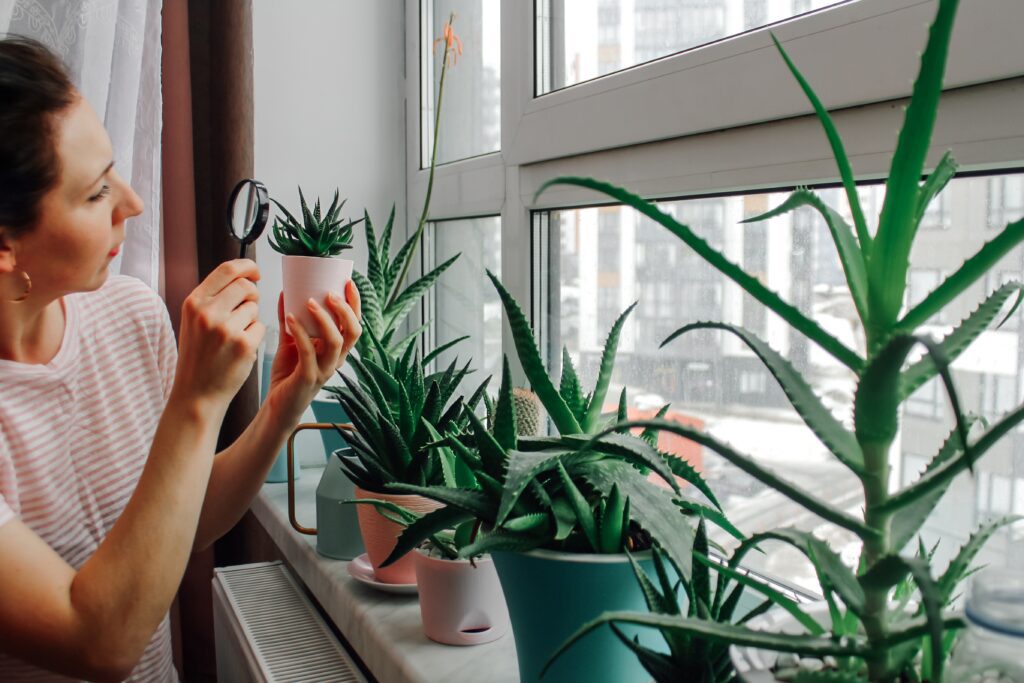Welcome to the world of work-from-home dads! Now, more than ever, an increasing number of fathers are transitioning to remote work. This new work style brings fresh challenges, particularly in creating an effective home office space. A well-designed workstation can be a game-changer for productivity and work satisfaction. But, how can you create such an area? Worry not, this guide is here to help! You’ll learn everything from selecting the ideal location in your home, choosing office furniture that ensures comfort, to decorating the space to keep you inspired.
“Design is not just what it looks like and feels like. Design is how it works.” – Steve Jobs
Keep this quote in mind as we dive deeper into creating a workspace that works for you. An optimally designed home office should not only meet aesthetic standards but should also foster productivity, creativity, and well-being.
- Location: Choosing the right spot in your home.
- Furniture: Picking the ideal desk and chair.
- Decor: Creating an ambiance that inspires.
Table of Contents
Choosing the Perfect Location

Setting up an ideal office at home starts with choosing the perfect location. The prime spot of your workspace can dramatically impact your productivity, creativity, and overall work performance. Here are some essential tips to help you select the most appropriate place in your home.
1. Look for a Quiet Place
As a work-from-home dad, you sometimes have to juggle your roles between family and work. However, the constant noise and disruptions can take a toll on your concentration. Opt for a remote and quiet place in your house where you can focus solely on your tasks. It could be a separate room, a converted garage, or a spare corner with minimum foot traffic.
2. Consider Space Requirements
Assess your space needs before settling on a location. You want a space that can accommodate your desk, chair, storage furniture, and any additional equipment without feeling cramped. You need ample room to move about freely to avoid a congested, cluttered workspace.
3. Prioritize Natural Lighting
Natural light is proven to boost mood and productivity. Position your workspace near windows or in a room with good natural light exposure. With this, you’ll be less likely to strain your eyes and more inclined to do your best work. However, avoid locations where sunlight directly hits your computer screen, causing glare.
4. Ensure Convenient Access to Power Outlets
Running extension cords across rooms can cause trip hazards and mess. Choose a spot with easy access to power outlets to power your computer, charge your devices, and supply your task lights without cords sprawling every which way.
5. Check Internet Connectivity
A stable internet connection is a prerequisite for a productive home office. Make sure your workspace has strong Wi-Fi signals to avoid connection issues that could disturb your workflow and productivity.
Designing a Functional Layout

Designing the layout of your home office is the next crucial step once you’ve found the perfect location. These step arrangements directly impact your work efficiency and comfort. So, here are some essential considerations to ensure that your office layout is functional and productivity-enhancing.
Layout for Movement
When designing the layout, keep in mind the need for ease of movement. Arrange your office furniture and gadgets in such a way that important items are within arm’s reach. This way, you’ll minimize disruptions to your workflow due to unnecessary movements.
Work Zone vs. Rest Zone
Consider dividing your home office into two zones — a work zone and a rest zone. The work zone is where you do your core activities and should have your desk, chair, and computers. Meanwhile, the rest zone could be a small nook where you take short breaks, preferably away from the desk, to help reset your mind. This could have a comfortable chair, maybe a coffee table, and things that help you relax, like books or family pictures.
Desk Positioning
Position your desk in a way that maximizes comfort and reduces distractions. An ideal position could be near a window with a view outside — desirable for mental breaks. However, make sure your computer screen is not directly in front of the window to avoid glare. Also, avoid facing the wall as it can create feelings of confinement.
Space for Tools and Gadgets
The layout should also consider space for essential office equipment, such as printers and scanners. These should be placed in a spot that’s easily accessible but not in the way of your main work area. It might be a good idea to use multifunction gadgets to save space.
Room for Expansion
Leave room for future changes or additions to your workspace. Your work or professional requirements may change over time, necessitating new equipment or rearranging existing ones. Design your office layout with flexibility in mind.
In essence, a functional layout seeks to create a balanced workspace that supports productive work while also considering comfort and personal style. It may take a bit of time and experimentation to achieve the perfect arrangement, but the impact it will have on your productivity and work enjoyment will be worth the effort.
Ergonomic Essentials: Finding the Right Chair and Desk

Creating a productive workspace goes beyond just finding an attractive desk and chair – it’s about prioritizing ergonomic essentials that contribute to your health and productivity. Let’s explore what to look for when choosing a chair and desk for your home office.
Choosing the Right Chair
Your chair might just be the most significant piece of furniture in your home office. Sitting for prolonged periods can take a toll on your back and neck, not to mention your productivity. The solution is an ergonomic chair, designed to support your posture and reduce strain.
- Lumbar Support: An ideal chair should support the natural curve of your lower back. This feature reduces the likelihood of back pain and ensures you sit upright, which is vital to maintaining a good posture.
- Adjustability: Your chair should be customizable to your needs, offering adjustable height, back angle, and armrests. Everyone’s body is different, and being able to adjust these elements can make a huge difference to your comfort.
- Quality Material: High-quality breathable fabric will ensure that you stay cool even when working for long hours. Moreover, the seat material should have enough padding to be comfortable not to feel the base of the chair.
Selecting the Perfect Desk
The right desk plays an equally vital role in your workspace’s overall comfort and functionality. When choosing a desk for your home office, here are a few key aspects to consider.
- Desk Height: Standard desks typically have a height of 29 to 30 inches from the ground. However, if you’re taller or shorter than average, you might find a height-adjustable desk more comfortable.
- Desk Size: Your desk should be large enough to accommodate your computer, keyboard, mouse, and other essential items. Anything smaller might make your workspace feel cramped and hinder your productivity.
- Quality and Durability: Choose a desk made of high-quality material that will handle the weight of your equipment and the wear and tear of daily use.
Remember, the best home office chairs and desks are the ones that keep you comfortable, even after long hours of work. It’s an investment that not only contributes to your decor but also has a direct impact on your productivity and well-being.
Let There Be Light: Optimizing Natural and Artificial Lighting
The importance of lighting in an office setting cannot be overstressed. Proper lighting significantly influences mood and can boost productivity. It’s a tool that savvy WFH dads can utilize smartly to create an efficient home office.
Capitalize on Natural Light
Natural light not only helps to save on electricity bills, but it also has players crucial role in enhancing mood and productivity. In fact, studies have shown that exposure to natural light can improve mental health. Try to position your office near a window where you can get plenty of sunlight.
- Use sheer curtains: If the sunlight gets too intense, use sheer curtains to filter the light and reduce any harsh glare. These allow you to enjoy the benefits of natural light without squinting your eyes.
- Install a mirror: Mirrors can reflect light around the room, helping to create a brighter and more open space. Just position it across from your window to maximize light distribution.
Smart Use of Artificial Lights
While natural light is ideal, it’s not always possible to obtain or sufficient, especially during the winter months or at night. That’s when artificial lights come into play.
- Overhead lighting: Install a bright overhead light, like LED, that covers the entire room to minimize shadows and evenly distribute light.
- Desk lamp: Consider a task light with adjustable brightness for your desk. This will help in performing tasks that require more focus and reduce eye strain.
- Ambient lighting: To create a warm and cozy atmosphere, add floor lamps or table lamps in strategic areas.
- Blue light filters: It’s also beneficial to use screens that have a night mode or blue light filters to avoid unnecessary eye strain, especially when working at night.
The color of the light matters too. While cool white light mimics daylight, creating a bright and awake atmosphere, warmer lights can help create a peaceful and relaxing environment. Don’t forget to listen to your body. If you’re getting headaches or your eyes are constantly tired, it might be time to reassess your lighting situation.
Remember: good light in your workspace reduces the strain on your eyes and helps you focus better. So, take time to perfect your office’s lighting setup. As a wise man once said, ‘Let there be light’, and there was productivity!
Creating a Clutter-Free Space
To achieve peak productivity as a work-from-home dad, it’s essential to maintain a tidy and organized workspace. A cluttered desk not only consumes your mental energy but can also subconsciously stress you out, thereby hampering your focus and efficiency. Here are some practical tips to help you create and maintain a clutter-free zone.
Regular Cleaning and Decluttering
Make a habit of cleaning your workspace at the end of every working day. Remove unnecessary items, wipe down your desk, and put everything back to its designated place. This routine creates a fresh start every morning and effectively wards off any encroaching clutter.
Adopt the “One In, One Out” Rule
If your workspace constantly draws clutter, try adopting the ‘one in, one out’ rule. For every new item that enters your workspace, strive to remove something in return. This keeps the quantity of stuff in check and balances your work environment.
Use Digital Tools
Masses of physical documents can swiftly create visual clutter. So opt for creating, storing, and organizing your data digitally as much as possible. Utilize cloud-based tools for note-taking, brainstorming, project management, and file storage. This not only aids in decluttering but also ensures easy access to your documents from anywhere.
Invest in Suitable Storage Solutions
Having the right storage for your work materials can be a game-changer for keeping your workspace clutter-free. It could be a set of drawers, bookshelves, filing cabinets, or even storage boxes. Choose whatever suits your space, preference, and budget.
By significantly reducing clutter, you’re bound to improve your work-from-home productivity. Remember, a tidy workspace equals a tidy mind.
Adding Personal Touches: Decor Ideas for Inspiration

You’ve got the location, functionality, lighting, and ergonomics in place, the bones of your home office are strong and solid. Now let’s talk about adding a bit of spirit to your workspace. Here, we’ll dive into the essence of great décor in a home office setup, focusing on how to add personal touches that inspire productivity and creativity.
Use What You Love
From a favorite painting to a quirky pencil holder, incorporating things that reflect your personality helps to make the space feel genuinely yours. Personal objects can elicit positive feelings and make your workspace a place where you love to be. Remember to pick elements that reflect your style, demonstrating who you are and what inspires you.
Showcase Your Achievements
There’s something truly motivating about displaying your hard-earned certificates, awards, or even project milestones in your workspace. It serves as a testament to your victories, helping to bolster your confidence and drive you to achieve more. You can also include a space for mapping out goals and aspirations as a constant reminder of what you’re striving for.
Affirmations and Quotes
Spruce up the walls with inspiring quotes or affirmations that resonate with you. Seeing these daily will provide a constant source of motivation, and for those tougher days, they can serve as a reminder of why you started in the first place.
Family Photos
Adding pictures of loved ones can also enhance the pleasantness of your workspace. Not only does it add a familial touch to your home office, but it also serves as a constant reminder of your ‘why.’ So, get that adorable picture of your kids or that lovely family portrait and put it where you can see it often.
Vision Boards
Incorporate a dynamic vision board in your decor — a powerful tool to visualize your short and long-term goals. Seeing what you’re working towards can motivate you to do your best, plus you can update it as your strategies change and grow.
Creating an office space that reflects not just what you do, but who you are, can make a significant difference in your productivity and overall satisfaction. Remember, it’s not just about making it look good. It’s about creating a space that feels good and motivates you to be your best every day.
The Power of Color: Choosing a Motivating Palette
Colors have a profound impact on our moods and can either energize us or calm us down. This makes choosing the right color palette for your home office critical for your productivity and well-being. Let’s explore how to make color work for you in your home office setup.
Understanding Color Psychology
Studying color psychology can significantly guide your choice of colors. In simple terms, every color evokes specific emotions and reactions:
- Red: stimulates energy and passion, excellent for detail-oriented tasks.
- Blue: Creates a serene and peaceful environment, suitable for long, creative tasks.
- Green: Evokes harmony and balance and reduces eye fatigue.
- Yellow: Suggests positivity, energy, and creativity, ideal for generating new ideas.
- Orange: Encourages positivity and enthusiasm, good for lively brainstorming sessions.
- Purple: Inspires imagination and spirituality, beneficial for innovative thinking.
Designing Your Color Palette
After understanding the psychology of colors, you can start designing your motivating color palette. First, choose a dominant color for your walls based on your work requirements and personal preferences. This color governs the overall mood in your office.
Next, select an accent color or two to break the monotony and add visual interest to your space. These can be incorporated in your furniture, curtains, rugs, or even wall art. Finally, pick a neutral shade to tie everything together and provide a break from bright hues. These could be shades of white, gray, or brown, used for the floors, ceiling, or trim.
Experiment with Different Shades and Tones
If you love a color but deem it too bright for your office, consider using it in a lighter shade or tone. Lighter tones usually have a softer effect and are less likely to overwhelm the space. Darker shades, though sophisticated, can make a room feel small and confining, so use them sparingly.
Ultimately, the success in creating a visually soothing and productivity-enhancing office space lies in balancing the colors. An overpoweringly vibrant room can be just as distracting as a dull one. So mix and match, try different combinations until you find one that resonates best with you and your work.
Tech Tools for WFH Dads: Must-Have Gadgets and Accessories
Working from home can be a creative, rewarding, and productive experience with the right tools in your arsenal. Employing the appropriate technology can distinguish the amateurs from the pros in the work-from-home landscape. In the following section, we’ll walk you through the essential tech tools and accessories that can enhance your productivity, streamline your workflow, and make your job as a WFH dad remarkably easier.
Reliable Laptop or Desktop
A high-quality, fast-performing laptop or desktop with a large screen should be your primary tool. Increasingly, remote workers are favoring models with high-resolution displays that reduce eye strain and strong processors for multitasking.
Wireless Keyboard and Mouse
A wireless keyboard and mouse can free up your desk space and improve ergonomics. As a general rule, choose peripherals that are comfortable to use for extended periods and can augment your working style without causing health issues, like repetitive strain injuries.
Quality Headsets
Communication is paramount when you work from home. Therefore, investing in a professional-grade headset with noise-canceling abilities can facilitate your conference calls, webinars, or online meetings by ensuring clear, uninterrupted communication.
Responsive Webcam
In the era of remote work, an HD webcam is a must-have. It assists in conference meetings, video calls, and webinars. If your computer doesn’t have a high-quality built-in camera, consider purchasing an external one that delivers clear, crisp visuals.
High-Speed Internet Connection
Lagging connections and slow download speeds can stifle productivity. Invest in a high-speed, reliable internet connection to maintain the flow of your work without unexpected disruptions.
External Hard Drives or Cloud Storage
Back up your important files and documents regularly either on an external hard drive or to a cloud service. External drives offer a physical backup option, while cloud services provide accessibility from any device.
Productivity and Collaboration Tools
Tools like project management software, time trackers, and collaborative platforms such as Google Workspace or Slack can simplify project monitoring, team communication, and task management, making it easier for you to stay on top of your work commitments.
VPN Service
A Virtual Private Network (VPN) secures your internet connection and safeguards against potential cyber threats. This is particularly important if you’re handling sensitive data at work.
While the needs may vary based on the nature of your specific job, these tech tools generally cater to most remote work requirements. However, remember to balance technology use with regular breaks to maintain a healthy work-life balance while being productive.
Noise Control: Strategies for a Quiet and Focused Environment
When it comes to boosting your productivity at home, controlling noise levels is something you can’t dismiss. In this section, we’ll go over some strategies to maintain a quiet and focused environment that encourages maximum efficiency.
Use Noise Cancelling Headphones
If you have children, pets, or even regular household noise, it can be a challenge to tune out these distractions. One of the simplest solutions is to invest in a pair of high-quality noise-cancelling headphones. They can be a real game-changer, allowing you to focus solely on your work and isolate the rest of the world.
Create Designated Quiet Hours
If your family life permits, consider implementing designated quiet hours during your most productive times of the day. Explain to your family that during these times, they should limit noise and interruptions as much as possible. This structure can also train your mind to expect focus, thus enhancing your productivity even more.
Consider Soundproofing
Depending on your home’s layout and construction, soundproofing could be an effective solution. This could involve adding special insulation to the walls or installing sound-absorbing materials around your workspace. It’s a more expensive option, but it can pay off in the long run if noise is a major issue.
Use a White Noise Machine
If soundproofing isn’t an option, using a white noise machine can be a helpful compromise. These devices emit a consistent, soothing noise that can blanket other disconcerting sounds around you, and they’ve been proven to enhance focus and concentration.
Take Advantage of Virtual Meetings
Another trick to control noise, especially during meetings, is to use the mute function during virtual meetings when you’re not speaking. This not only helps to reduce background noise but also minimizes interruptions.
All these strategies can help a work-from-home dad significantly reduce noise distractions and foster a quiet, focused environment conducive to productivity.
The Importance of Proper Ventilation and Air Quality
You’re set up with a desk, a chair, and the perfect lighting. But for a genuinely healthy and productive workspace, you mustn’t overlook the importance of proper ventilation and air quality. Let’s delve into why these factors are crucial and how you can optimize them in your home office.
Understanding Ventilation and Air Quality
Ventilation simply refers to the process that replaces or changes the air in a space to control temperature or remove moisture, odors, smoke, dust, airborne bacteria, and carbon dioxide. Ventilation replenishes the room with oxygen, enhancing the overall air quality.
Good air quality, on the other hand, reduces the risk of health issues like allergies, asthma, headaches, or even more serious long-term conditions. It also significantly enhances your work productivity and overall well-being.
The Ventilation-Productivity Connection
Improper ventilation can lead to a stuffy, uncomfortable, and unhealthy work environment. In contrast, appropriate ventilation helps regulate room temperature, eliminates contaminants, and brings in fresh air, which is essential for maintaining focus and concentration.
Studies indicate that there’s a direct correlation between indoor air quality and productivity levels. A well-ventilated room with clean air keeps you refreshed, energized, and productive throughout the day, allowing for optimal task execution and mental sharpness.
Strategies to Improve Ventilation and Air Quality in Your Home Office
So, how can you ensure proper ventilation and high-quality air in your home office? Here are a few tips:
- Ensure Adequate Airflow: Keep windows and doors open whenever possible to allow fresh air into the room.
- Air Purifiers: These devices can help remove dust, allergens, and airborne pathogens which can detract from workspace comfort and health.
- Use Exhaust Fans: If your home office has an exhaust fan, it can serve as a practical solution to maintain a steady supply of fresh air and circulate oxygen in the room.
- Keep Your Workspace Clean: Regularly dust and vacuum your workspace. This ensures you’re not just moving dust around, reducing its chances of getting in the air and being breathed in.
- Use Indoor Plants: Certain indoor plants act as natural air purifiers—more on this in a later section!
Creating a workspace that contributes to your health and productivity involves several elements—and proper ventilation and good air quality rank high among them. By focusing on these, you’re on your way to crafting a workspace that goes beyond just looking good—it feels good, too.
Incorporating Greenery: The Benefits of Indoor Plants

Adding some greenery to your home office by incorporating indoor plants isn’t just about aesthetics. It’s a persuasive strategy to enhance productivity while working from home. Let’s delve into the reasons you might want to consider this addition.
Enhances Air Quality
Indoor plants can act as natural air purifiers. By absorbing carbon dioxide and releasing oxygen during photosynthesis, they improve the quality of the air in your workspace. Certain plants like spider plants and snake plants are even known to filter harmful toxins from the environment.
Boosts Humidity
Most indoor plants release moisture into the air, increasing humidity. This can be particularly beneficial in dry climates or heated indoor areas, as it can help prevent dry skin, dry throat, and other dryness-related discomforts. Office plants such as the Areca Palm are great for this purpose.
Reduces Stress
Research has suggested that being around greenery can help reduce stress levels. A study in the Journal of Physiological Anthropology found that interacting with indoor plants can calm the nervous system and lower blood pressure. This can help you feel more relaxed and focused.
Improves Mood and Productivity
Besides their physical health benefits, plants can also have a significant positive impact on your mental well-being. They contribute to a more pleasant, serene atmosphere which can boost your mood. Furthermore, the sight of plants can promote creativity and improve productivity, making them a great addition to any workspace.
Choosing the Right Indoor Plant
When adding plants to your office, you’ll want to consider your available lighting and how much care each plant requires. Some plants, like succulents, require minimal care and can survive in low light, making them great for those who might not have a green thumb. Conversely, plants like the Peace Lily have higher light and care needs, but they also offer higher air-purifying benefits.
From a simple desk cactus to a larger floor-standing plant, incorporating indoor greenery into your home office can elevate not just the aesthetics of the space, but your overall work experience as well. It’s a simple and beneficial change to consider for any work-from-home dad.
Storage Solutions for an Organized Home Office
As you navigate the world of remote work, there’s one thing you swiftly realize: organization is key. A well-structured, organized space significantly enhances your productivity, aids easy access to files or documents, and reduces distractions. This is where storage solutions come into play, transforming your home office into a streamlined workspace. This section will guide you on how to pivot from cluttered chaos to an organized work haven.
1. Utilize Wall Space
When floor space is limited, the walls serve as a perfect ally. Incorporating wall shelves and mounted organizers lets you pack away office supplies, documents, and books, keeping them within arm’s reach. You might even consider a corkboard or magnetic whiteboard for quick notes and reminders.
2. Opt for Multi-Purpose Furniture
Another clever way to ensure efficient storage is by investing in multi-purpose furniture. Consider a work desk with in-built drawers or a side table that doubles as a filing cabinet. Not only does this save space, but it also ensures everything you need is close at hand.
3. Invest in Office Organizers
Office organizers like drawer dividers, desk trays, and pen stands play a crucial role in maintaining a neat workspace. These keep your essentials categorized and accessible, saving you from the frustration of finding a missing pen or stapler at the last minute.
4. Incorporate Storage Boxes and Bins
Storage boxes and bins can conceal a multitude of sins. These versatile solutions can be tucked away under the desk, stationed on shelves or piled neatly in a corner. They’re excellent for stashing away less frequently used items, enveloping potential clutter before it emerges.
5. Utilize Digital Storage
When possible, adopt digital tools, cloud storage, and online resources to reduce paper clutter. Digitizing receipts, expenses, and certain documents can make them easily searchable and reduce the need for physical storage.
By implementing clever and efficient storage solutions, you can create an organized workspace that breeds productivity and keeps distractions at bay. Remember that your home office should be a place of serenity and focus – and having a place for everything adds to that sense of tranquility.

Leave a Reply